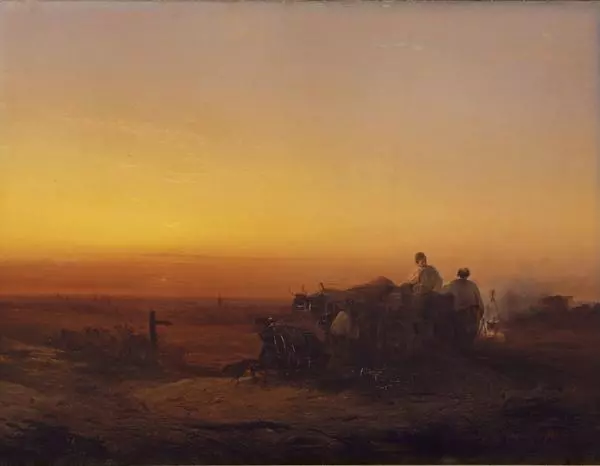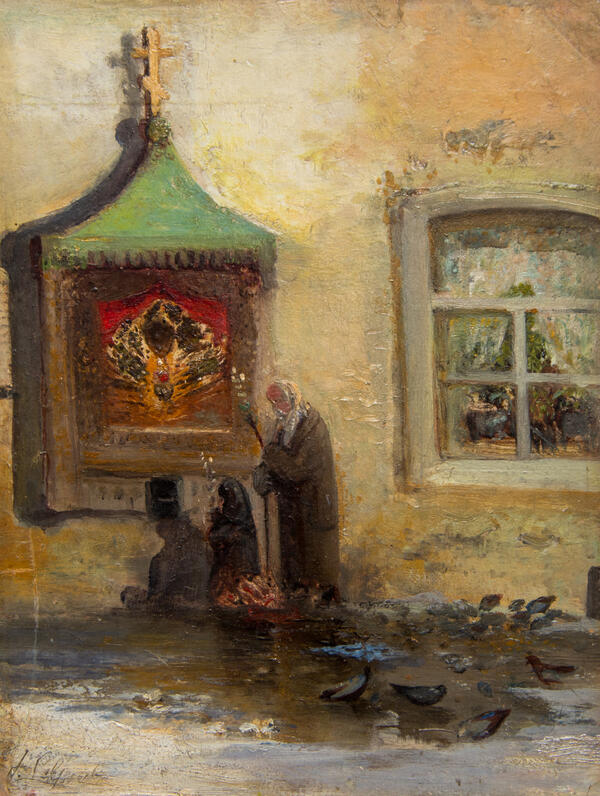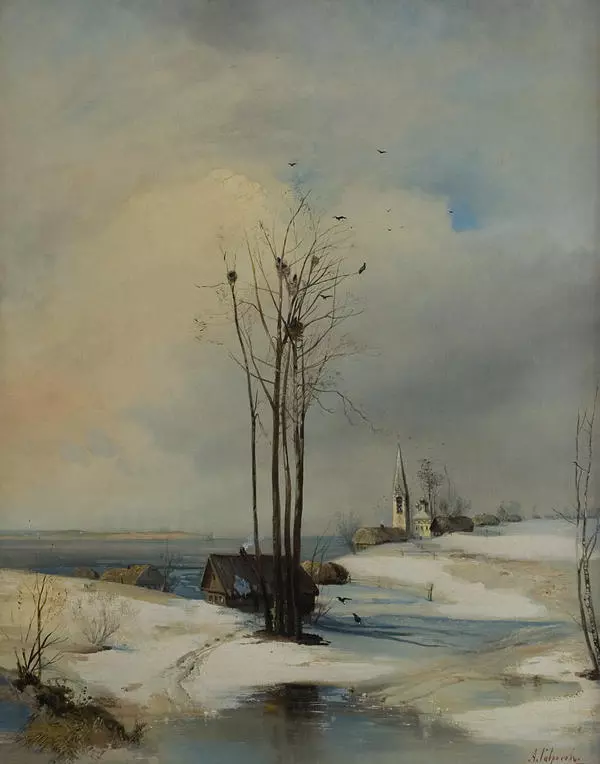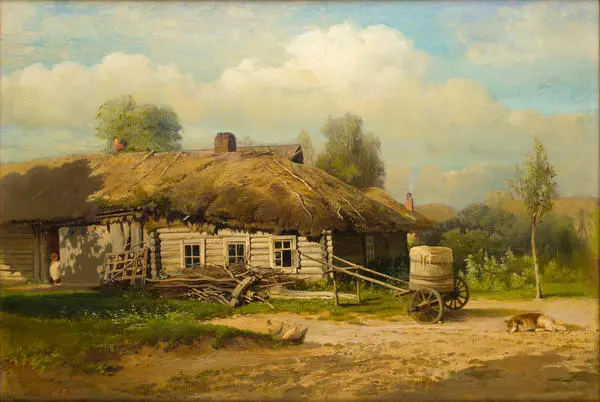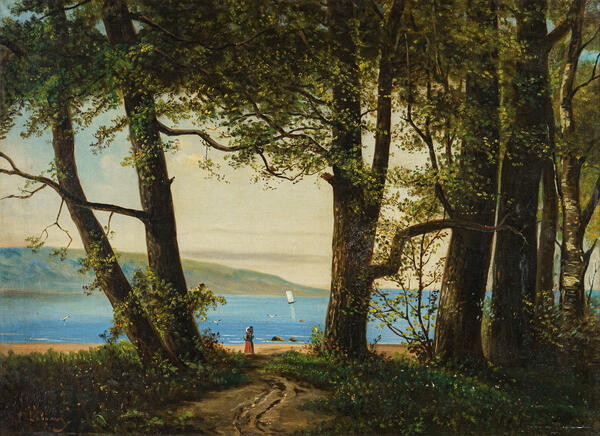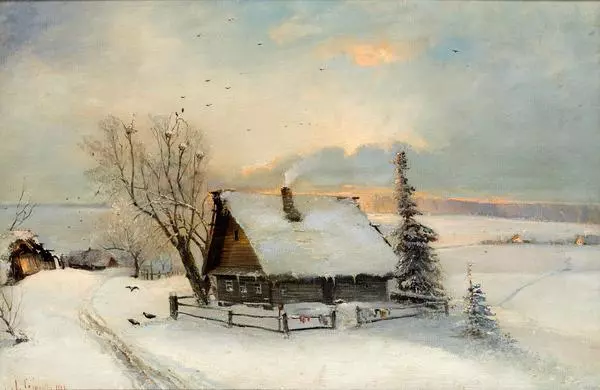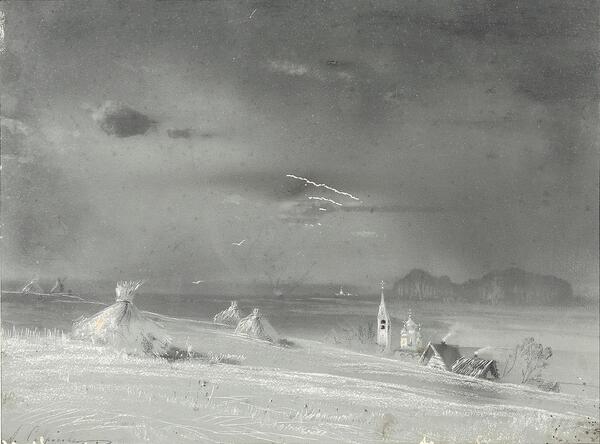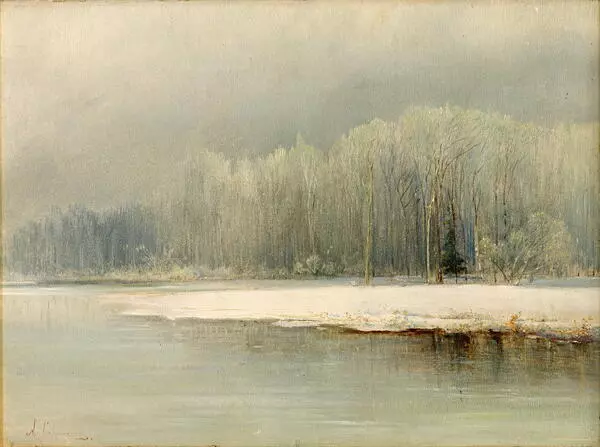The landscape ‘Mud Season’ was created in the late period of Alexey Savrasov’s works. In the 1890s, the artist lived in the village of Pokrovskoe-Fili near Moscow, worked a lot outside, painted from life.
The painting came to the museum in 1988 from the private collection of the Volgograd theater artist Nikolay Medovshchikov. According to a family legend, he inherited the landscape from his grandfather, Anton Bartsal, who in turn received several of Savrasov’s works as a gift from the artist himself.
Bartsal was a famous opera tenor, worked at the Bolshoi Theater with Leonid Sobinov, and then, taught classes at the Conservatory. In the 1890s, Savrasov and Bartsal were friends; they traveled to the Czech Republic together several times. The artist often visited Bartsal, sometimes staying for several days. The singer’s family also kept several sketches that Savrasov made in his house.
In the depths of the painting “Mud Season” you can see the silhouette of the famous Church of the Intercession in Fili. The building of the church was erected in 1691–1694 at the expense of Lev Naryshkin, brother of Tsarina Natalia Kirillovna. The cathedral was built in the “Naryshkin Baroque” style, and was one of the classic examples of the late 17th century architecture. Peter the Great took part in the arrangement of the church and personally visited it several times. In 1703, after the capture of Narva, the emperor brought his uncle colored stained-glass windows for the church as a gift. The central and western heads of the cathedral were decorated with a crown and a double-headed eagle. The interior of the church is richly decorated with carvings, which was still unusual for Russia at that time. It was badly damaged during the Great Patriotic War. Its restoration was completed only in 1980.
Savrasov was one of the first Russian artists to work in the genre of realistic landscape. The most interesting motives for him were the transitional states of nature: dusk and dawn, the change of seasons. Savrasov’s works are distinguished by pinpoint precision and subtlety of drawing, complex coloring and careful work with light.
Savrasov’s creative method was based on constant observation of nature. He endowed nature with human emotions and often told his students: “There must be a soul in a landscape.” The artist taught at the Moscow School of Painting, Sculpture and Architecture. Among his students were Isaac Levitan and Konstantin Korovin.
The painting came to the museum in 1988 from the private collection of the Volgograd theater artist Nikolay Medovshchikov. According to a family legend, he inherited the landscape from his grandfather, Anton Bartsal, who in turn received several of Savrasov’s works as a gift from the artist himself.
Bartsal was a famous opera tenor, worked at the Bolshoi Theater with Leonid Sobinov, and then, taught classes at the Conservatory. In the 1890s, Savrasov and Bartsal were friends; they traveled to the Czech Republic together several times. The artist often visited Bartsal, sometimes staying for several days. The singer’s family also kept several sketches that Savrasov made in his house.
In the depths of the painting “Mud Season” you can see the silhouette of the famous Church of the Intercession in Fili. The building of the church was erected in 1691–1694 at the expense of Lev Naryshkin, brother of Tsarina Natalia Kirillovna. The cathedral was built in the “Naryshkin Baroque” style, and was one of the classic examples of the late 17th century architecture. Peter the Great took part in the arrangement of the church and personally visited it several times. In 1703, after the capture of Narva, the emperor brought his uncle colored stained-glass windows for the church as a gift. The central and western heads of the cathedral were decorated with a crown and a double-headed eagle. The interior of the church is richly decorated with carvings, which was still unusual for Russia at that time. It was badly damaged during the Great Patriotic War. Its restoration was completed only in 1980.
Savrasov was one of the first Russian artists to work in the genre of realistic landscape. The most interesting motives for him were the transitional states of nature: dusk and dawn, the change of seasons. Savrasov’s works are distinguished by pinpoint precision and subtlety of drawing, complex coloring and careful work with light.
Savrasov’s creative method was based on constant observation of nature. He endowed nature with human emotions and often told his students: “There must be a soul in a landscape.” The artist taught at the Moscow School of Painting, Sculpture and Architecture. Among his students were Isaac Levitan and Konstantin Korovin.


